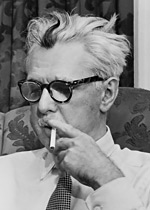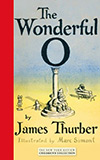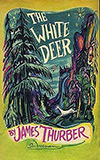James Thurber
| Full Name: | James Grover Thurber |
| Born: | December 8, 1894 Columbus, Ohio, U.S. |
| Died: | November 2, 1961 Columbus, Ohio, U.S. |
| Occupation: | Author, Humorist |
| Nationality: | American |
| Links: |
|
Biography
James Thurber was an American cartoonist, author, journalist, playwright, and celebrated wit. Thurber was best known for his cartoons and short stories, such as "The Catbird Seat", published mainly in The New Yorker magazine and collected in his numerous books. One of the most popular humorists of his time, Thurber celebrated the comic frustrations and eccentricities of ordinary people. In 2013, the second film adaptation of his story, "The Secret Life of Walter Mitty" came out. In collaboration with his college friend Elliott Nugent, he wrote the Broadway comedy The Male Animal, later adapted into a film, which starred Henry Fonda and Olivia de Havilland.
The last twenty years of Thurber's life were filled with material and professional success. He published at least fourteen more books, including The Thurber Carnival (1945), Thurber Country (1953), and the extremely popular account of the life of the New Yorker editor Harold Ross, The Years with Ross (1959). A number of his short stories were made into movies, including "The Secret Life of Walter Mitty" (1947), which is also regarded as one of the best short stories written in the twentieth century. Many of his short stories are humorous fictional memoirs from his life, but he also wrote darker material, such as "The Whip-Poor-Will", a story of madness and murder. His best-known short stories are "The Dog That Bit People" and "The Night the Bed Fell"; they can be found in My Life and Hard Times, which was his "break-out" book. Among his other classics are "The Secret Life of Walter Mitty", "The Catbird Seat", "A Couple of Hamburgers", "The Greatest Man in the World", "If Grant Had Been Drinking at Appomattox". The Middle-Aged Man on the Flying Trapeze has several short stories with a tense undercurrent of marital discord. The book was published the year of his divorce and remarriage. His 1941 story "You Could Look It Up", about a three-foot adult being brought in to take a walk in a baseball game, is said to have inspired Bill Veeck's stunt with Eddie Gaedel with the St. Louis Browns in 1951. Veeck claimed an older provenance for the stunt, but was certainly aware of the Thurber story.
In addition to his other fiction, Thurber wrote over seventy-five fables, some of which were first published in "The New Yorker" (1939), then collected in Fables for Our Time & Famous Poems Illustrated (1940) and Further Fables for Our Time (1956). These were short stories that featured anthropomorphic animals (e.g. "The Little Girl and the Wolf", his version of Little Red Riding Hood) as main characters, and ended with a moral as a tagline. An exception to this format was his most famous fable, "The Unicorn in the Garden", which featured an all-human cast except for the unicorn, which doesn't speak. Thurber's fables were satirical, and the morals served as punchlines as well as advice to the reader, demonstrating "the complexity of life by depicting the world as an uncertain, precarious place, where few reliable guidelines exist."
His stories also included several book-length fairy tales, such as The White Deer (1945), The 13 Clocks (1950) and The Wonderful O (1957). The latter was one of several of Thurber's works illustrated by Marc Simont. Thurber's prose for The New Yorker and other venues included numerous humorous essays. A favorite subject, especially toward the end of his life, was the English language. Pieces on this subject included "The Spreading 'You Know'," which decried the overuse of that pair of words in conversation, "The New Vocabularianism", "What Do You Mean It Was Brillig?", and many others. His short pieces--whether stories, essays or something in between--were referred to as "casuals" by Thurber and the staff of The New Yorker.
Thurber wrote a biographical memoir about the founder/publisher of The New Yorker, Harold Ross, entitled The Years with Ross (1958). He wrote a five-part New Yorker series, between 1947 and 1948, examining in depth the radio soap opera phenomenon, based on near-constant listening and researching over the same period. Leaving nearly no element of these programs unexamined, including their writers, producers, sponsors, performers, and listeners alike, Thurber republished the series in his anthology, The Beast in Me and Other Animals (1948), under the section title "Soapland." The series was one of the first to examine such a pop-culture phenomenon in depth. Thurber's wit made it more than a sober piece of what would later be called investigative reporting.
The annual Thurber Prize, established in 1997, honors outstanding examples of American humor.
Works in the WWEnd Database
Non Series Works |
|||||||||||||||||||
|
|
|
|
|
|||||||||||||||














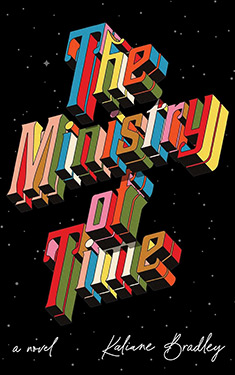
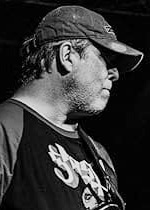



 Full Details
Full Details

